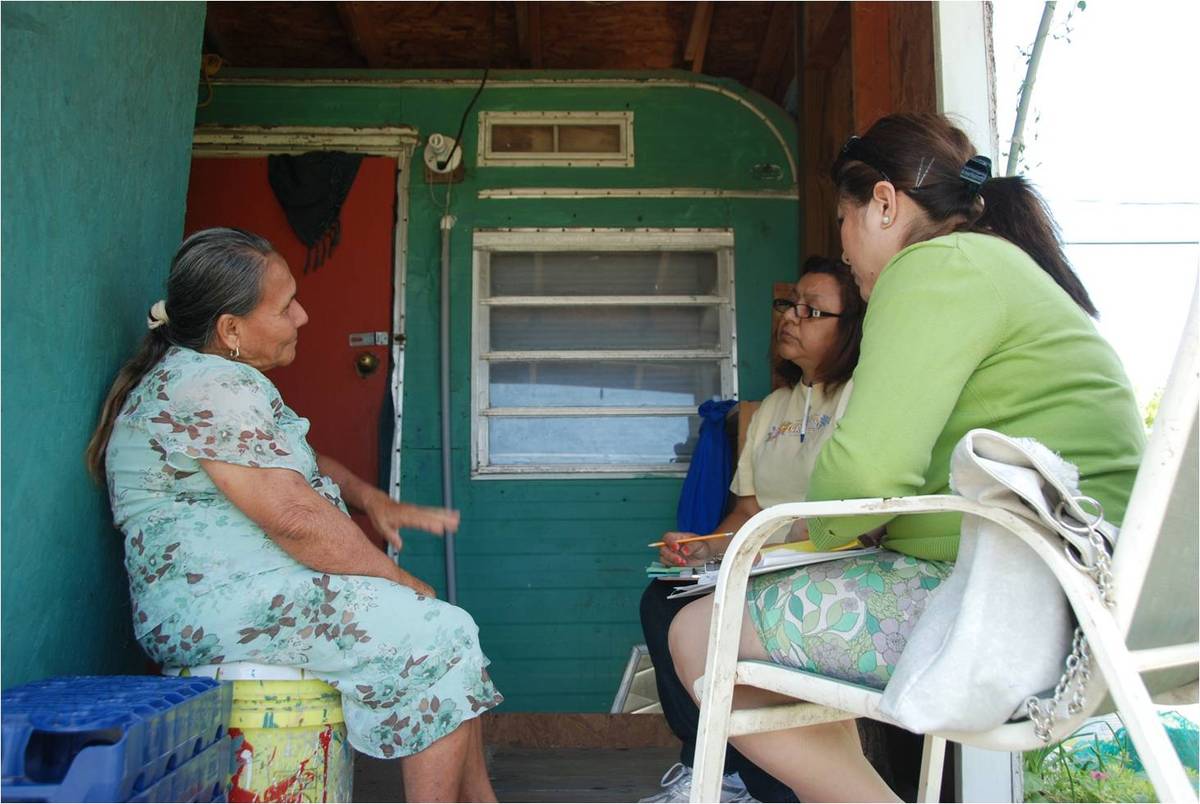[Author]Yolanda González[/Author]
DALLAS, Texas–For Guadalupe and Socorro Lechuga, getting enough to eat every day is the biggest challenge they face in their old age. “We’re usually hungry because it’s hard to get enough to eat, except when someone gives us some vegetables,” said the married couple, who are 76 and 62 years old.
Residents of one of the settlements called colonias along the southern border of Texas, the elderly couple, originally from Mexico, say they can only spend $10 to $15 per week to supply a minimum pantry of beans, sugar and coffee.
Barely enough Social Security Guadalupe receives a monthly paycheck of $700 from Social Security. Even if he could find work at his advanced age, he is confined to a wheelchair stemming from an injury he received from a fall, he said. Socorro doesn’t work and takes care of him.
“That money is barely enough to pay the rent for the land where we live, the electricity, water bills and the truck we use, so the remaining money is used to buy some food,” the couple explained. They live in a colonia, an unincorporated community along the border, called Cardenales Delta, in the outskirts of Mission, Texas.
Sometimes they eat potatoes, packaged instant soups, eggs and bread that are included in the food given away by local groups, as well as vegetables donated by nearby farmers, said Guadalupe, who emigrated from Zacatecas, Mexico decades ago.
“My monthly check isn’t enough for food since it doesn’t increase when food prices go up,” he noted. “We aren’t getting by with what we make, but we try,” he said.
The Lechugas’ case is not unique. The number of Hispanic elders who suffer from hunger and food insecurity is a reality in Southern Texas, according to research by Joseph Sharkey, PhD, and colleagues at the Texas A&M Health Science Center of the University of Texas A&M.
Choosing Between Medicine and Food “In the homes of elders of Mexican origin, there are limited financial resources that often make people have to choose between paying for services or medicine and other expenses such as food,” said Sharkey.
The report analyzes the results of a field study among 95 elderly participants in 14 groups living in four border areas of South Texas. Participants were interviewed in Spanish about the conditions of their food supply by promotoras de salud, or community social workers.
Among the research findings are that elders of Mexican origin in that region deal with crucial challenges that prevent them from getting food. Key barriers to nutrition are advanced age for employment, language barriers since many are monolingual, physical disabilities, lack of education and immigration status.
Despite this, “The elders are strong and face their reality of social disparity as a situation that is better than living in Mexico in most cases,” said Sharkey, who stressed that their poverty level in South Texas is similar to that of Mexican immigrants elsewhere in the United States, such as in Georgia and New York.
The Texas A&M study found that 91.6 percent of elders interviewed were born in Mexico, 55.8 percent are married and 63.2 percent make less than $700 per month. A little over half said they are on food stamps, over one-third resort to food banks or seek support from churches, and one-fourth get free meals provided to seniors.
“Most of the elderly respondents come from the countryside, and many used to plant their vegetables and raise livestock as a food source, in addition to collecting wild fruit or other food in their home country. Now they can’t do that here,” Sharkey added.
Food insecurity remains high
Sharkey noted that some of the colonias along the southern border of Texas, have implemented community gardening programs using raised beds on the otherwise arid soil, to grow vegetables the residents can share.
Some local efforts to improve the food supply and prevent hunger among elders include education about managing and acquiring food, such as instructions on proper refrigeration and information about buying economical and nutritious food, Sharkey said.
Sharkey cited another recent survey of 140 elderly women, which found that two out of three experience hunger in the colonias on the Texas border.
Texas has the second-highest rate of food insecurity in the United States and is home to 9 million households at risk of hunger, according to a report by the U.S. Department of Agriculture.
What’s more, Texas has the two counties with the most extreme poverty level nationwide, Cameron and Hidalgo, both on the Texas-Mexico border. More than four of 10 residents there, most of them Hispanic, live in poverty, according to research by the University of Texas at Austin.
The study found that more than half of impovertished elders in those counties are Hispanic and that most impoverished communities along the Texas-Mexico border were concentrated in the colonias.
The National Hispanic Council on Aging (NHCOA) has pointed out that many elders in the United States suffer from hunger and food insufficiency. According to that organization’s president Yanira Cruz, “Many old people go to bed on an empty stomach.”
The poverty level among Hispanic seniors in the United States is 17.9 percent, according to a recent report by NHCOA. The Economic Policy Institute estimates that 70 percent of Latino seniors are “economically vulnerable,” while 30 percent are so impoverished they face hunger or food insufficiency.
Yolanda González Gómez wrote this story for HuffPost Voces with support from the Journalists in Aging Fellows Program, a project of the Gerontological Society of America and New America Media.



